
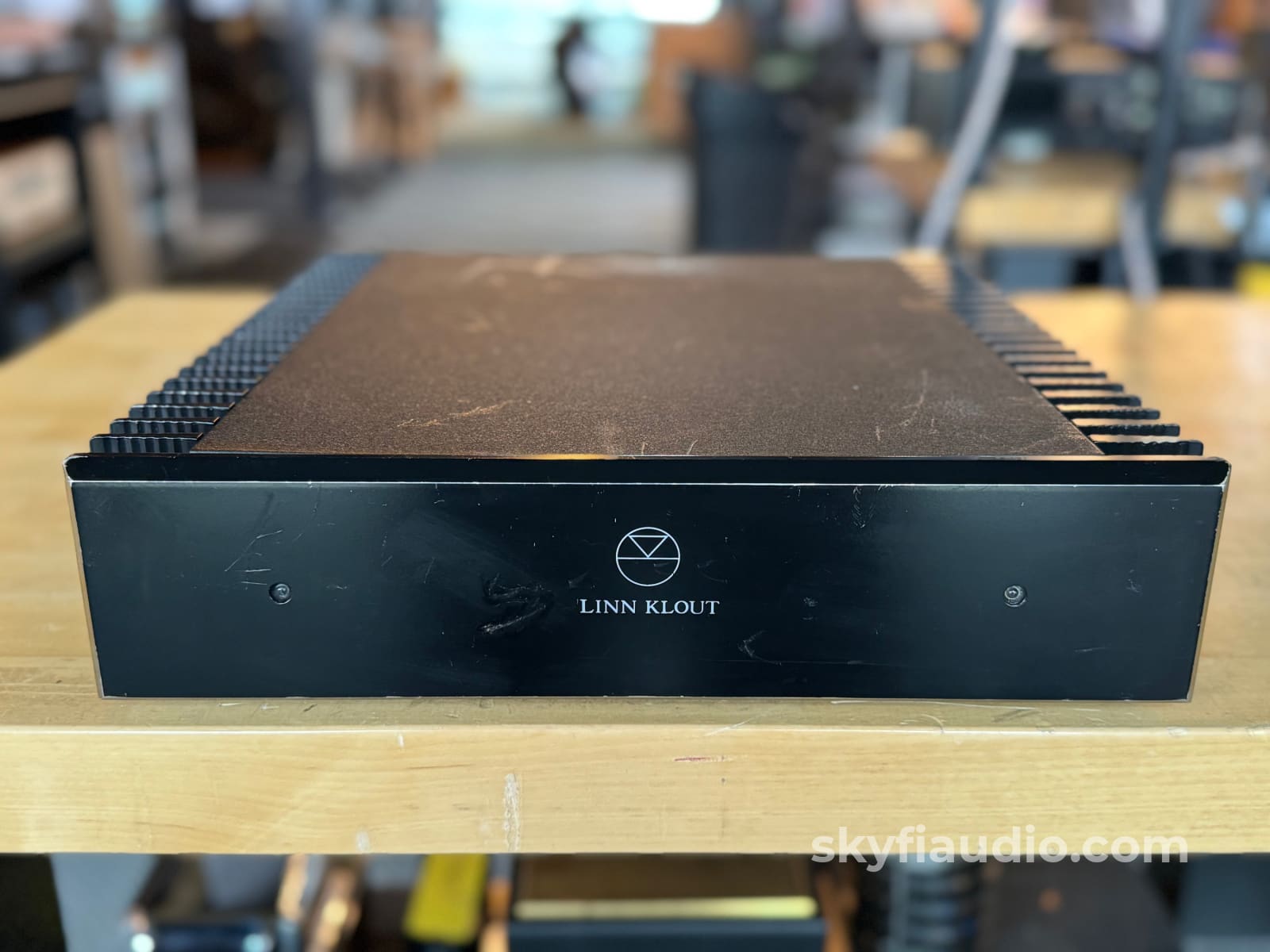
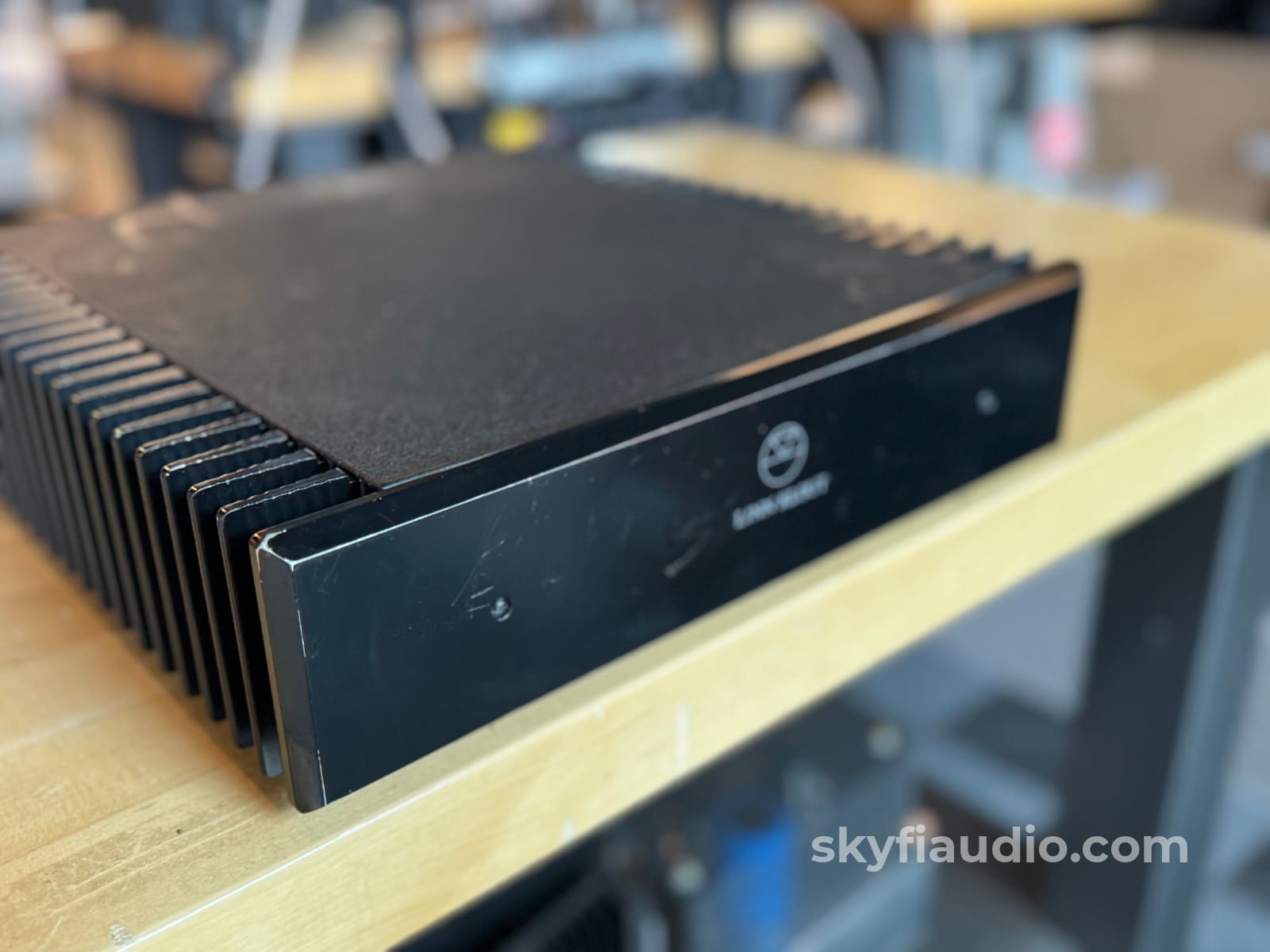
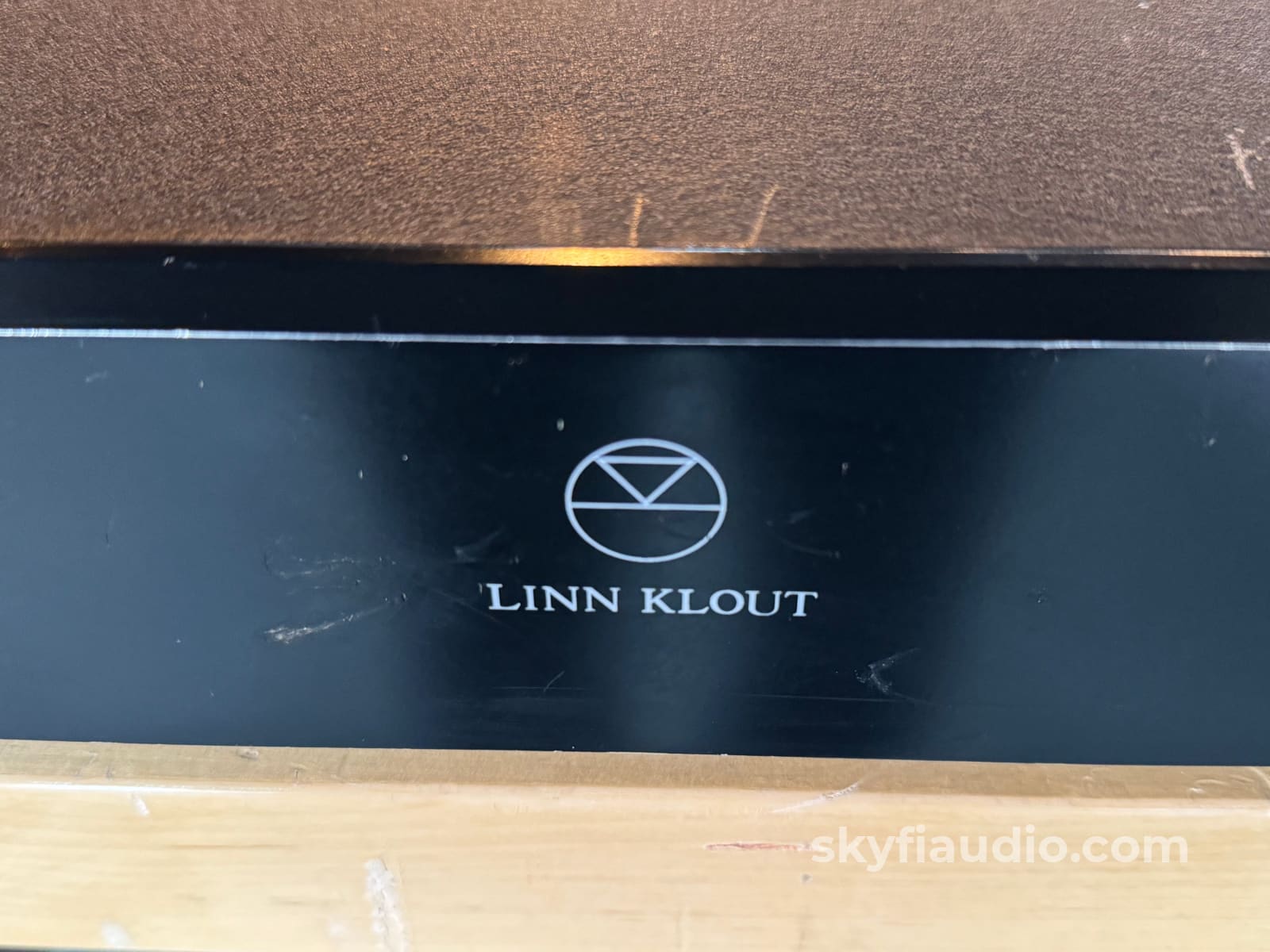
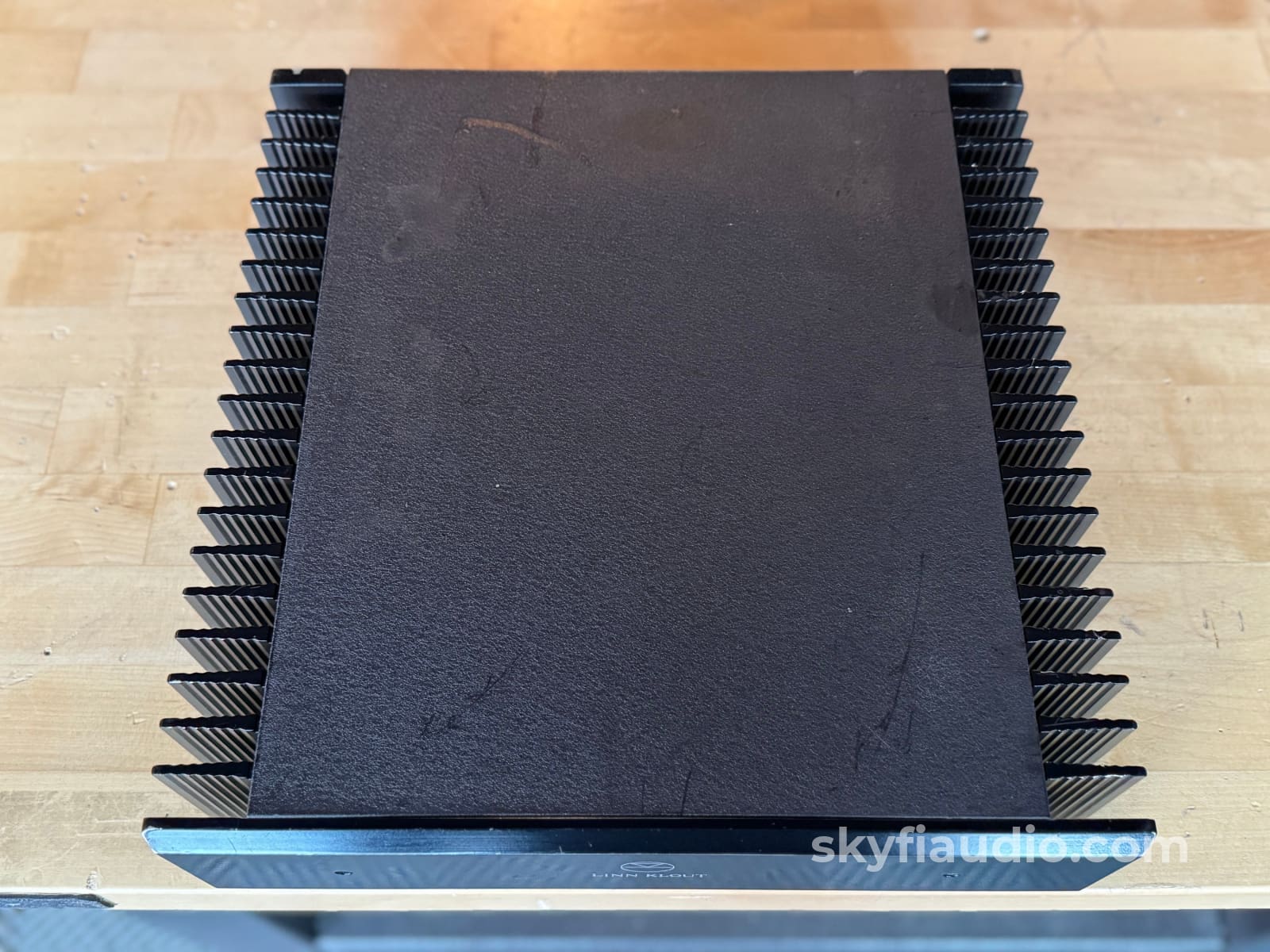
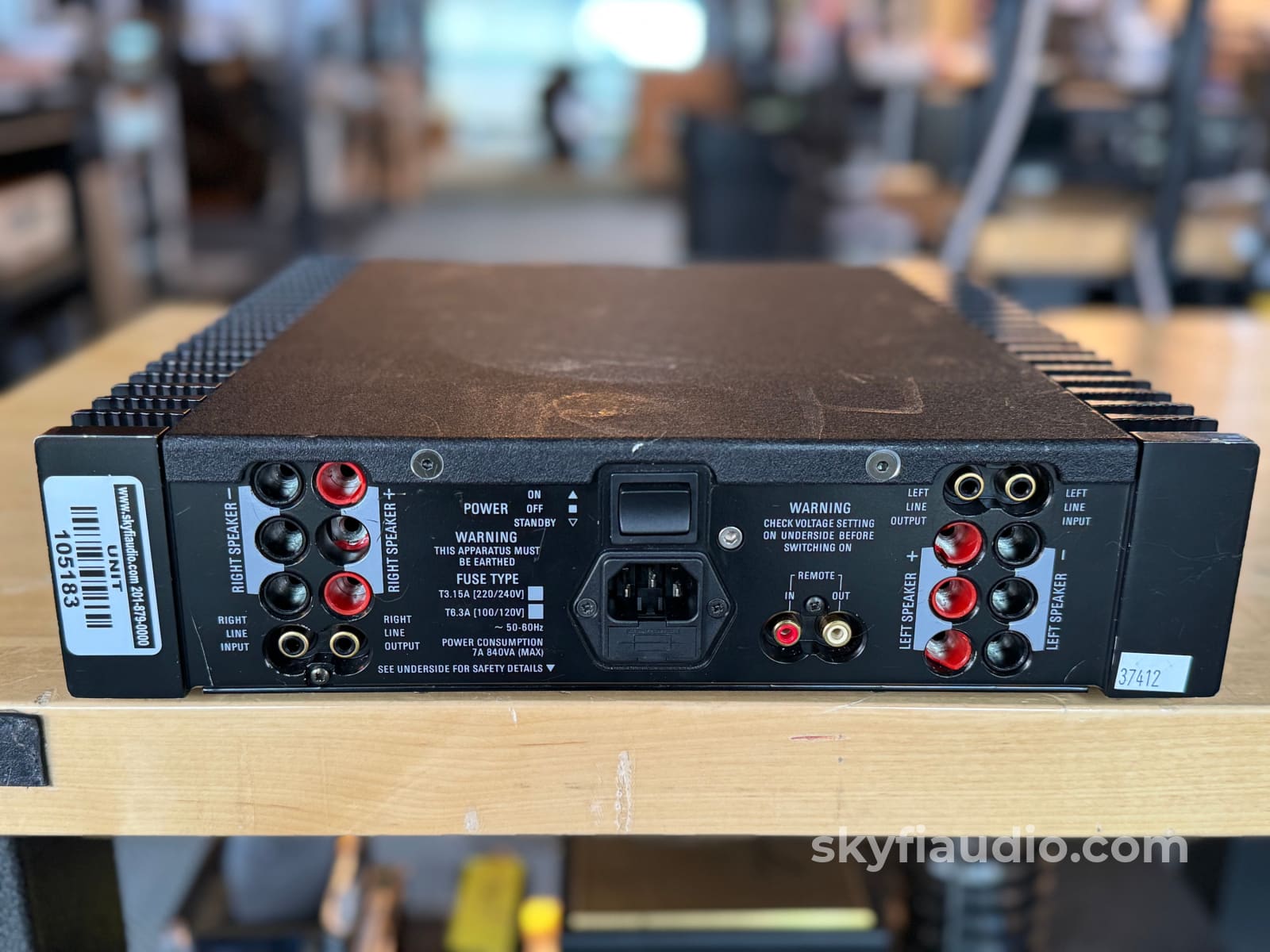
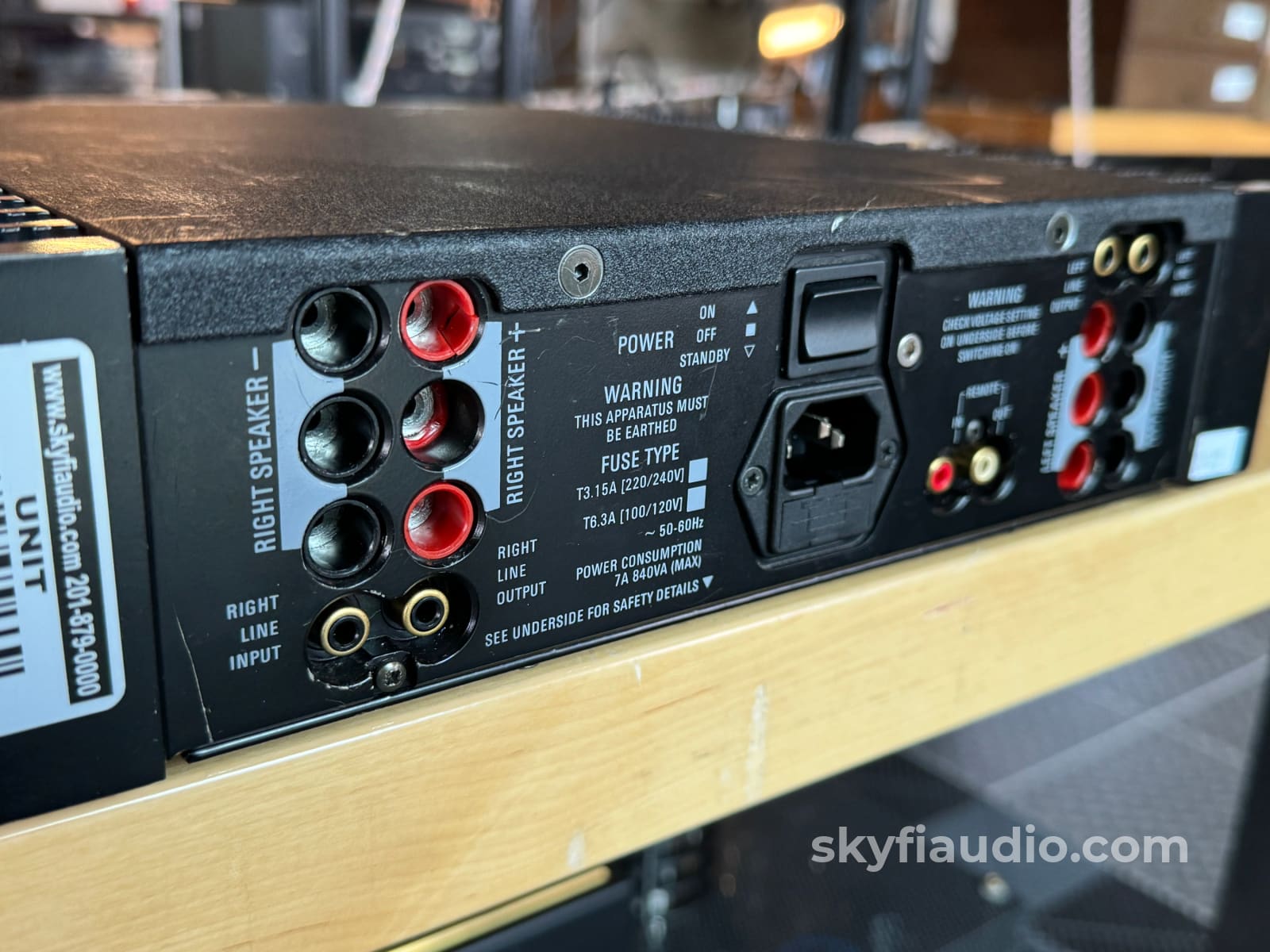
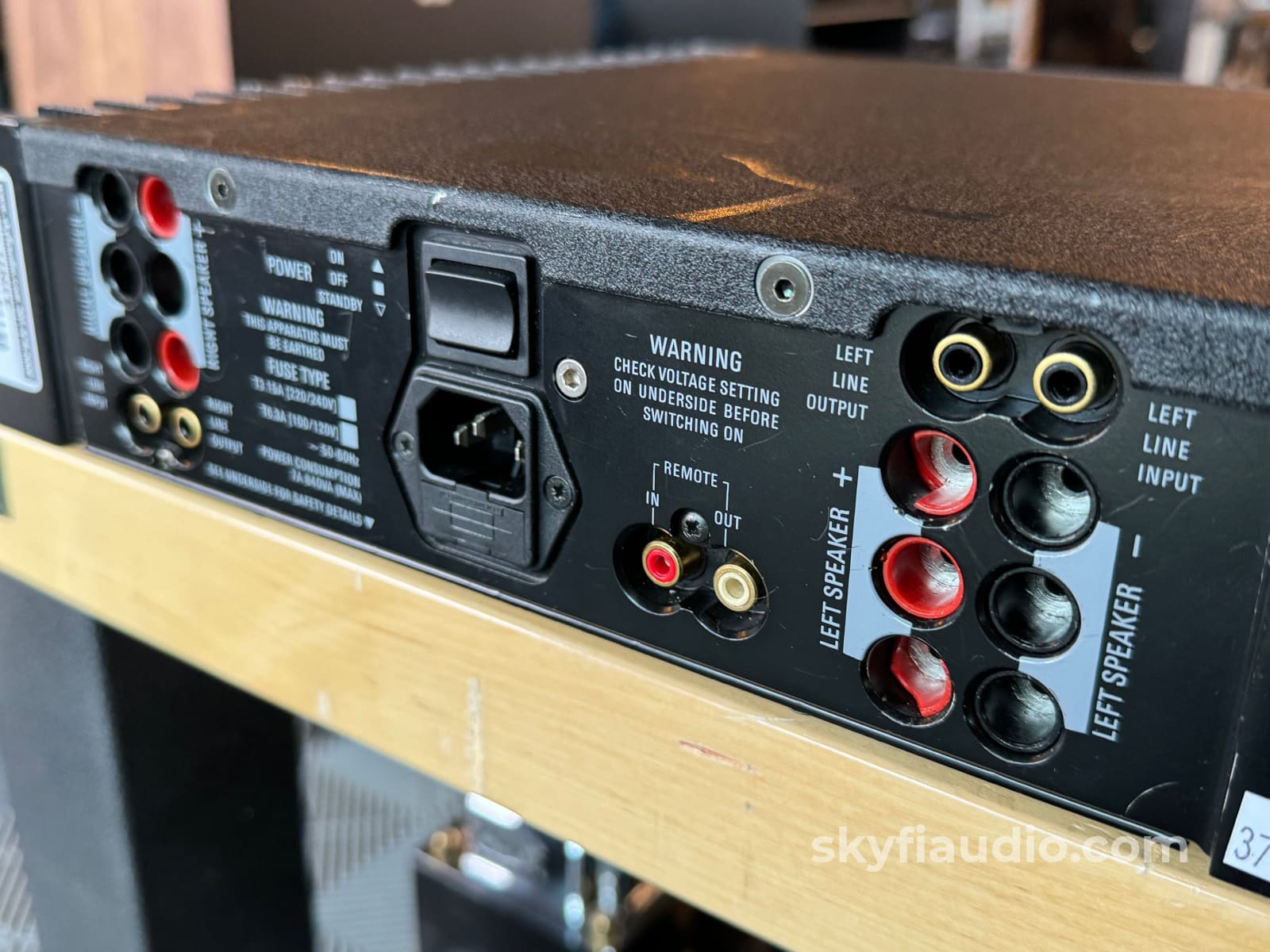
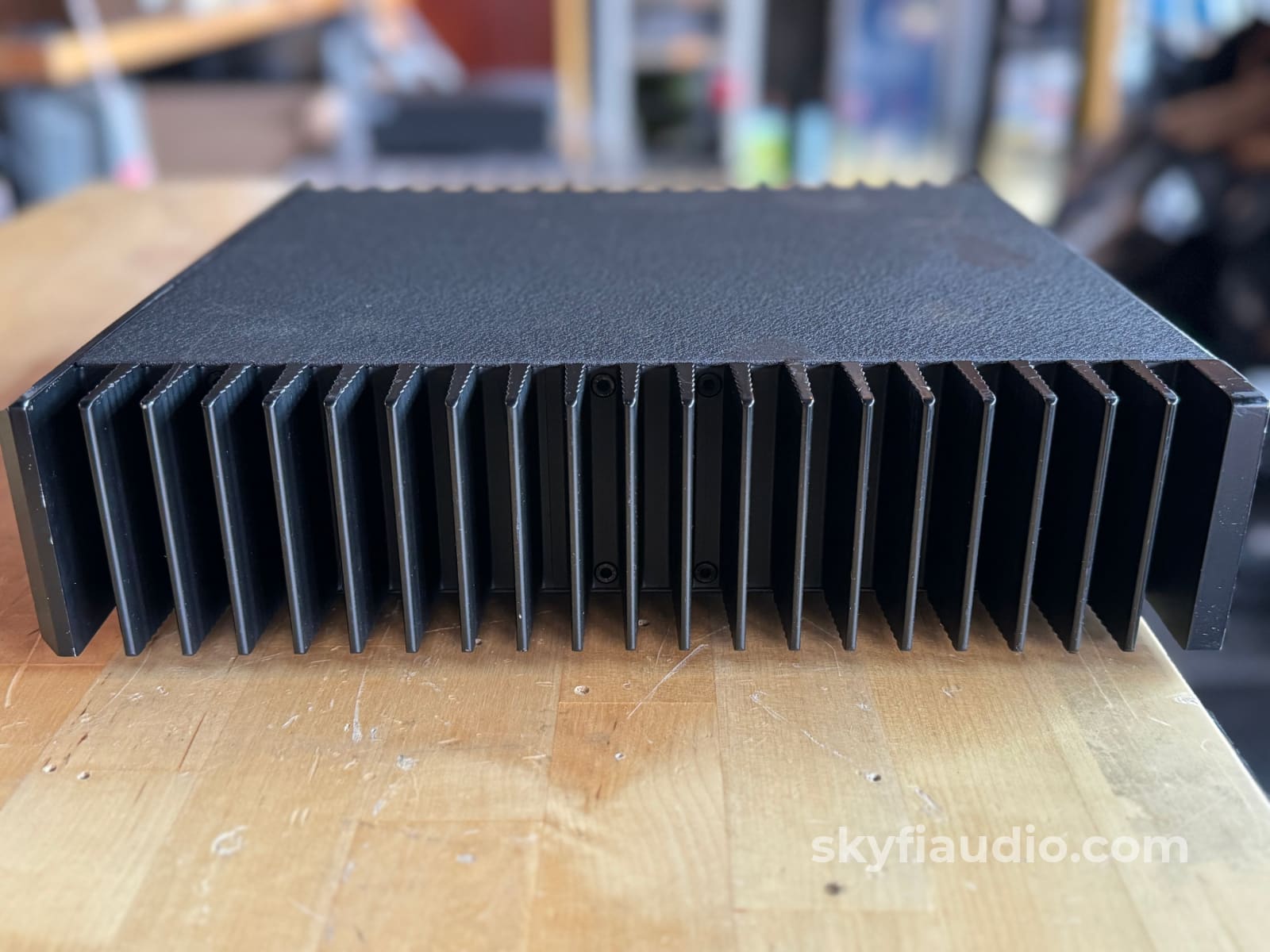

Linn Klout Solid State Amplifier - Linn's Best Amplifier Ever
Free Shipping on Most Electronics - Excludes Speakers and Items Requiring Freight - Contiguous U.S. Only
Pickup currently unavailable at SkyFi 479

Linn Klout Solid State Amplifier - Linn's Best Amplifier Ever
SkyFi 479
479 South Broad Street
Glen Rock NJ 07452
United States
General:
Might be the best selling amplifier model we've had at SkyFi. The last one sold almost immediately.
Highly reviewed and regarded amplifier from Linn, employing a single pair of transistors for each channel providing the most natural amplification you'll ever hear.
Especially when paired with Linn speakers like some of these on our store.
All made in the UK.
Fully tested in our lab and driven to full power without issue.
More from Linn:
Provides the uncompromising power, stability and performance required to drive any loudspeaker to the highest standard of musical accuracy.
Two separate amplifiers in one box each with its own fully regulated and isolated power supply for the ultimate loudspeaker control and stability
Protection circuitry which does not limit output current. (protected against: transistor overload, instantaneous over-current, short circuit, over-temperature, over and under voltage, DC input, power supply in-rush current)
Advanced circuitry to maximise loudspeaker control and protect the amplifier and loudspeakers from overload
Three sets of speaker outputs for optimised bi-and tri-wiring upgrades or driving auxiliary loudspeakers
Parallel line-in/line-out connectors for ‘daisy-chained’ multi-amplifier installations
Remote switch-on facility to enable freedom of location and system configuration
• Front facia bi-coloured LEDs to indicate product status.
• Massive heatsink extrusion for cool, stable performance.
• Fully screened transformer to allow hum-free stacking.
• Linn active crossover modules accommodated internally for improved playback performance and simple active system installation.
• Surface-mount electronics to improve heat dissipation and reliability, and provide
optimum signal handling.
• Ultra-short signal path, which preserves music signal integrity, in a very compact package.
SkyFi Cosmetic Notes:
The top cover is bent, showing an outline of the transformer. Significant cosmetic wear is visible on all surfaces. Many of the plastic protector rings around the speaker output terminals are cracked and damaged. There seem to be two faceplate versions of this amplifier. The face on this unit has a smooth gloss finish.
SkyFi Technical Notes:
Specialized thin banana connectors are required to interface with the speaker connectors.
Ownership:
Second Owner
Connections:
Specialized thin banana connectors are required to interface with the speaker connectors.
General Sound:
Smooth, uncolored, undistorted natural and clean
Cosmetic Condition:
6/10 = Fair. Three to four minor scratches, or one major scratch. See our detailed rating description here.
Working Condition:
Working perfectly and tested in our lab and listening room.
Included:
Just the unit and power cord.
Packing:
Will be packed using our highly developed in-house process and custom packing materials.Specs:
Introduced: 1992
Input Connectors: 1 Pair RCA Phono/Channel
Input Impedance: 5 k Ohms
Voltage Gain: 28.5 dB
Power Output: 160 W / Channel /4 Ohms, 80 W / Channel /8 Ohms
Speaker Connectors: 3 pairs 4mm sockets/channel
Power Consumption: 840 W maximum, 25W idling
Power Supply: 100/120/220/240V +/- 10%
Dimensions:
Size: 12.60" x 12.83" x 3.15" (W 320mm x D 326mm x H 80mm)
Weight:
24 lbs.
Link to Manual:
Click Here
Recommended Cables:
Kimber Kable - RCA Interconnects - Better
Testing Process:
We start with a visual inspection of all internal components to make sure that there are no signs of heat stress or damage. Capacitors are checked for telltale signs of predictive failure including bulging, shrunken wrappers, or physical leakage. We also inspect resistors and other passive components for signs of overheating. If tube arcing has occurred in the past we can usually spot discoloration on the output tube sockets. On vintage units we often spot check select capacitors for value and ESR.
If the amplifier passes visual inspection, we move on to a full test of all of the tubes. We use a modern Amplitrex AT-1000 Professional Tube Tester which is capable of testing both emission and Gm with a high degree of accuracy.
We document the results of each tube and replace any weak or suspect tubes before proceeding.
When we power on tube amplifiers for the first time we usually use a variac and current limited AC supply and slowly raise the voltage up to nominal mains level while monitoring plate, screen, filament, and negative bias supply voltages where applicable.
If everything is in order we feed a low level test signal into the amplifier’s input and monitor its output on an oscilloscope across an 8 ohm dummy load. At this point we are just looking to verify basic function and confirm that the output transformers are not damaged.
Once we have verified that the amplifier is safe to operate, we connected it to full mains power. For fixed bias amps we set the bias to manufacturer spec. For cathode biased amps we monitor the plate to cathode voltage to determine if the output tubes are operating in a safe range. Once the output section is verified we move onto bench evaluation.
We start by feeding the input of the amplifier with a low level 1 KHz test signal, slowly increasing its amplitude while monitoring the amplifier’s output on an oscilloscope for signs of noise, clipping, distortion, or improper channel balance. We continue increasing the signal level until the amplifier reaches clipping. At this point we take an output power measurement and compare it to the spec sheet of the amplifier to verify proper performance.
We finish off the bench evaluation with a 1 KHz square wave check and a 20 Hz to 20 KHz sine sweep to assess the amplifier’s frequency response characteristics. This battery of tests will usually reveal if the amplifier has any issues that need further attention.
Before the device leaves the bench we perform a listening test with actual music using a variety of preferred test tracks. Our benches are outfitted with familiar monitor speakers which help us identify inconsistencies that will not always show up on our test gear. The main things that we are listening for are hum or noise with no signal present, proper center image, clicks, pops, or any other obvious undesirable audio characteristics.
If the unit passes all of these tests it is moved to our long term testing rig where we simulate real word operating conditions for 6-8 hours minimum.
For tube amps we like to run this test at least twice.
This allows us to monitor the unit for signs of thermal runaway or intermittent issues that only crop up when it has fully come up to temperature. We find this step to be essential, especially for vintage units.
Choose options
